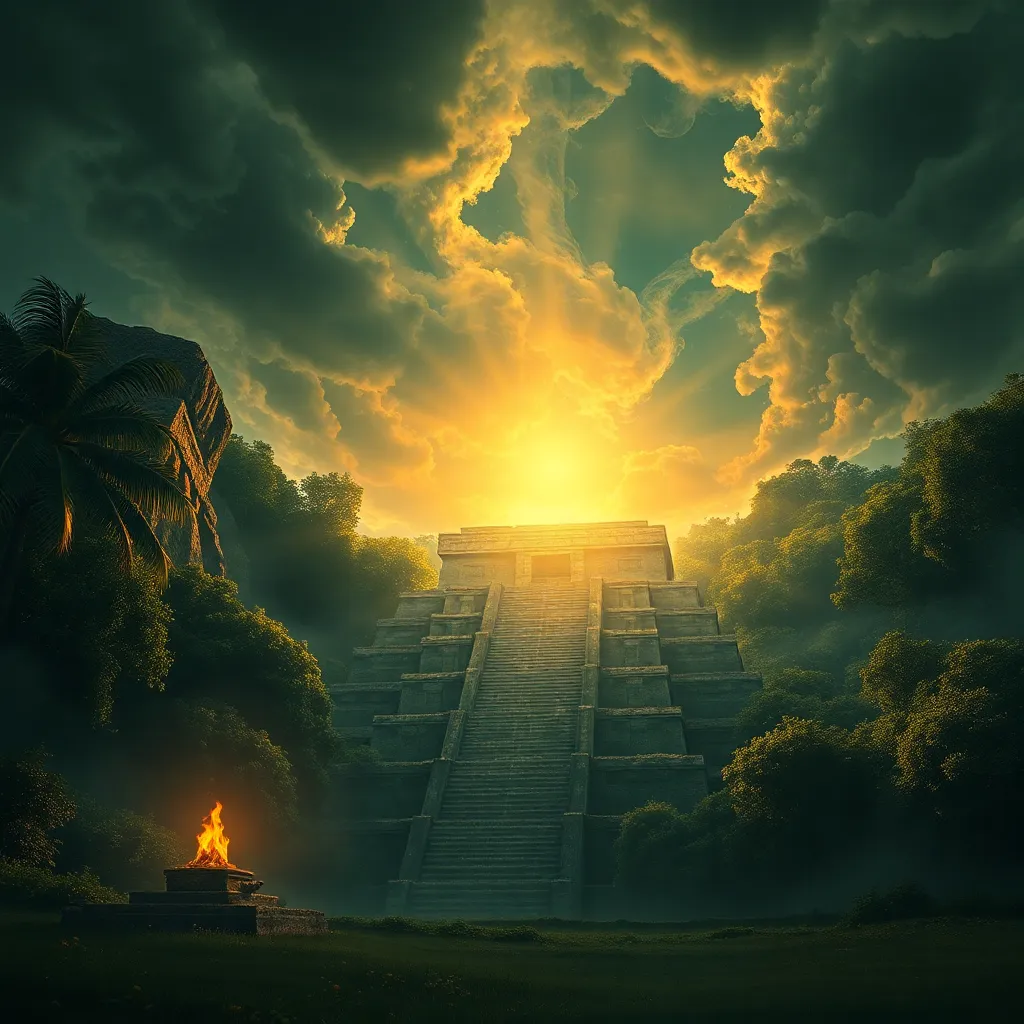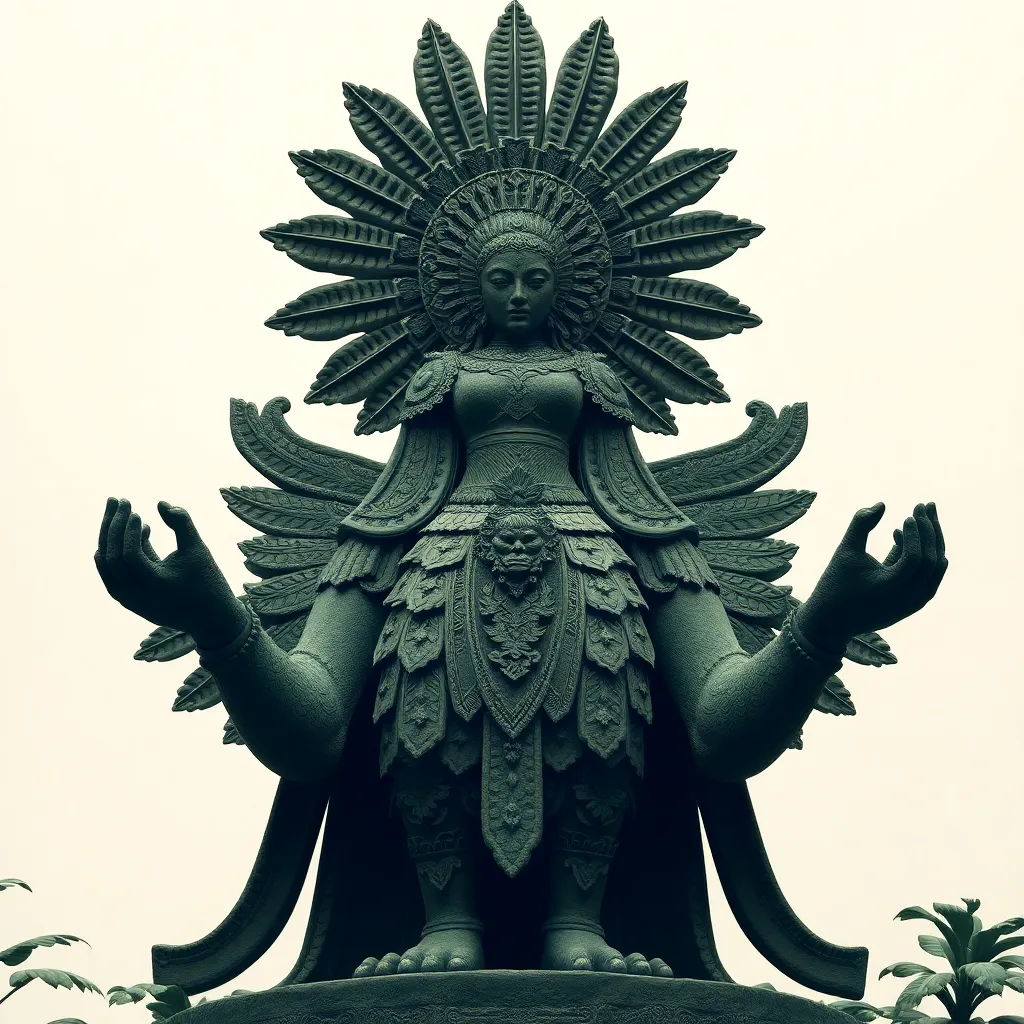Itzamná and the Mayan Concept of the Sacred: A Journey into the Divine
I. Introduction
Itzamná is a pivotal figure in Mayan mythology, revered as a god of creation, wisdom, and the cosmos. His presence permeates various aspects of Mayan life, embodying the essence of the sacred in a culture deeply intertwined with spirituality and nature. The Mayans viewed the sacred not merely as a religious construct but as a fundamental aspect of existence that influences their daily lives, governance, and connection to the universe.
This article aims to explore the profound connection between Itzamná and the divine, shedding light on his significance in Mayan culture and how this relationship reflects the broader Mayan understanding of the sacred.
II. The Figure of Itzamná: God of Creation and Wisdom
A. Historical and mythological background
Itzamná is often depicted as one of the most important deities in the Mayan pantheon, believed to be the creator of the universe and humanity. His stories are woven into the fabric of Mayan mythology, where he is frequently associated with other gods, such as the sun god Kinich Ahau and the maize god Yumil Kaxob. The mythology surrounding Itzamná illustrates the complexities of Mayan beliefs, where creation myths intertwine with rituals and societal norms.
B. Major attributes and characteristics of Itzamná
Itzamná is characterized by several key attributes:
- Wisdom: He is often depicted as a wise elder, symbolizing knowledge and enlightenment.
- Creation: As a creator god, he is associated with the origins of the earth, sky, and human beings.
- Healing: Itzamná is also linked to medicine and healing, embodying the balance between life and death.
- Sky and Stars: He is associated with celestial bodies, representing the connection between the cosmos and terrestrial life.
C. Itzamná’s role in the Mayan pantheon
In the Mayan pantheon, Itzamná holds a unique position as a creator and wise deity, often invoked in rituals and prayers. His influence extends beyond mythology into the political and social realms, where leaders would seek his favor to legitimize their rule and ensure prosperity for their people.
III. The Sacred in Mayan Cosmology
A. Concept of the sacred in Mayan belief systems
The sacred in Mayan cosmology is deeply rooted in the understanding that everything in the universe is interconnected. The Mayans perceived the world as a living entity, where every mountain, river, and star holds spiritual significance. This belief system emphasizes respect for nature and the cosmos as sacred elements that demand reverence and care.
B. How the sacred influences daily life and rituals
Daily life for the Mayans was saturated with rituals reflecting their sacred beliefs. Activities such as farming, hunting, and even communal gatherings were often accompanied by ceremonies that honored the gods and sought their blessings. This integration of the sacred into everyday life fostered a communal identity and a profound respect for the natural world.
C. The interconnection between nature, the cosmos, and the divine
The Mayans believed that the divine was present in every aspect of existence, from the smallest grain of maize to the vastness of the stars. This interconnection is exemplified in their agricultural practices, where rituals to Itzamná ensured bountiful harvests, reflecting the belief that human actions directly influenced cosmic balance.
IV. Itzamná’s Influence on Mayan Society
A. Itzamná’s impact on governance and leadership
Itzamná’s significance extended to governance, where rulers often sought his guidance and approval. Leaders would conduct rituals to honor Itzamná, believing that their authority was divinely sanctioned. This connection between the divine and political power reinforced social hierarchies and the legitimacy of leadership.
B. The role of Itzamná in agriculture and sustenance
As a god of creation, Itzamná played a crucial role in agriculture. The Mayans relied heavily on maize as a staple crop, and rituals dedicated to Itzamná were integral to planting and harvesting cycles. Farmers would offer prayers and sacrifices to ensure fertility and protection of their crops.
C. Itzamná as a symbol of unity and cultural identity
Itzamná emerged as a unifying figure in Mayan culture, representing shared beliefs and values. His stories and attributes served as a source of cultural identity, connecting the various Mayan city-states through a common reverence for the divine.
V. Rituals and Offerings to Itzamná
A. Description of key rituals associated with Itzamná
Rituals dedicated to Itzamná varied but commonly included:
- Offering of food and maize, symbolizing sustenance and gratitude.
- Bloodletting ceremonies, where individuals would offer their blood as a sign of devotion.
- Prayers and incantations aimed at invoking his blessings.
B. Significance of offerings and sacrifices in Mayan tradition
Offerings and sacrifices were vital in Mayan tradition, representing a reciprocal relationship with the gods. The act of giving was believed to ensure the favor of the deities, maintaining cosmic balance and harmony.
C. Modern-day practices and reverence for Itzamná
Today, descendants of the ancient Mayans continue to honor Itzamná through various rituals and practices. These modern expressions of reverence reflect a deep-rooted cultural heritage and the ongoing significance of the sacred in their lives.
VI. The Sacred Texts and Artifacts
A. Examination of codices and inscriptions related to Itzamná
Ancient Mayan codices and inscriptions provide invaluable insights into the reverence for Itzamná. These texts often describe rituals, myths, and the cosmological significance of Itzamná in relation to other deities.
B. Artistic representations of Itzamná in Mayan art
Itzamná is frequently depicted in Mayan art, showcasing his attributes and importance. Sculptures, pottery, and murals illustrate his connection to creation and the cosmos, serving as visual narratives of his divine role.
C. The importance of these texts and artifacts in understanding Mayan spirituality
The codices and artifacts are crucial for understanding the spiritual landscape of the Mayans. They not only document religious practices but also reflect the values, beliefs, and complexities of Mayan society.
VII. The Legacy of Itzamná in Contemporary Culture
A. Itzamná’s influence on modern indigenous practices
Itzamná’s legacy continues to influence modern indigenous practices in Mesoamerica. Many indigenous groups incorporate elements of Mayan spirituality, including rituals and reverence for nature, into their contemporary lives.
B. The role of Itzamná in popular culture and media
In recent years, Itzamná has gained recognition in popular culture, appearing in literature, films, and art. This resurgence reflects a growing interest in ancient civilizations and their belief systems, bridging the gap between past and present.
C. Preservation of Mayan spirituality and the sacred in today’s world
The preservation of Mayan spirituality is vital for cultural identity. Efforts to revive and maintain traditions associated with Itzamná and other deities highlight the importance of the sacred in contemporary indigenous communities.
VIII. Conclusion
In summary, Itzamná embodies the essence of the sacred within Mayan culture, representing creation, wisdom, and the interconnectedness of life. His significance transcends mythology, influencing daily practices, governance, and cultural identity. As we reflect on the enduring relevance of these beliefs, it becomes clear that understanding Itzamná offers a profound journey into the divine, illuminating the sacred threads that bind humanity to the cosmos.



